“I have to get out of this heat!” Tanya screamed. “I can’t stand it! I will die out here!”
My thermometer showed that it was 50 degrees Celsius. Our throats were sore, dry and hurting. Sweat was pouring down our bodies even when we were sitting dead still under the makeshift shadow we had created by hanging a blanket between two thorn trees. The time was approximately 11 a.m and it would just continue getting hotter by the hour up until 3 p.m. when it would start cooling down enough for us to feel alive. I knew from experience that if we don’t drink 1,5 litres of water per hour during the hottest hours, cramps, sunstroke and a gruesome death would eventually ensue. But to be able to get drinkable water we had to pump whatever water we picked up through a filter to be certain we wouldn’t get ill. It took us 20 minutes of hard work to get a clean enough litre to drink. Worst of all, however, was the harsh sunlight. It was particularly hurting Tanya’s eyes and I knew that it was strong enough to permanently cause blindness if we didn’t take care. Even though I had taped her sunglasses early that morning to avoid sunlight bouncing off the sand into her sore eyes whilst walking, her eyes were extremely red and watery. This was another reason that walking was out of question between 8 a.m. and 4 p.m. In an hour we would have problems merely attempting to breathe, it would be impossible to think and sound decision-making was out of the question. Not surprising, considering the brain stops to function upon reaching 45 degrees Celsius.
“You just have to accept it, Tanya”, I told my partner, who’s first Expedition this was, “There’s no other way but to suffer until it becomes bearable.”
It was our third day after leaving Al Ghaydah together with our newly acquired camel, Kensington, and our first Bedu guide, Mabkhout. For him, this severe heat was a natural part of his life. He knew nothing else. We carried almost 40 kgs of personal equipment, but Mabkhout brought absolutely nothing but his Kalashnikov. When he saw all our equipment the first day of packing, he begged us to at least get rid of the tent. We pointed out we needed it to keep our technical equipment safe and working. In an effort to try and impress him and prove to him the value of carrying all these technical gadgets, I brought out the GPS. I tried to explain in my extremely limited Arabic how a GPS works and ended my speech by bragging that it could exactly, to the meter, tell us where we were at that precise moment. Mabkhout looked at me nonchalantly and asked:
“Can it tell us where we can find water? Or grazing for the camel?”
Surprised I shook my head and subsequently Mabkhout killed my technical superiority by adding:
“What good is it, if it can’t tell us where we can find water and grazing?”
This was the second phase of my Yemen Travels By Camel. Back in December 2011 I had travelled 350 kms from Zabid to Sanaa during the war. Everyone thought I was out of my mind, but I neither got killed, kidnapped nor held for ransom. I trusted the generous, hospitable and charismatic Yemenis more than the extremely negative global media. I was right. This time my wish was to cross one of the hottest areas in the world, the Sands of Al Mahra, in summer. I also wanted to document the life of the local Bedu tribes, who by many are seen as the first human beings to have populated the Arabian Peninsula. Furthermore, and equally as important, was to take on the world media who I thought highly exaggerated the dangers of going to Yemen and the presence of the terror network called Al Qaeda. These were the reasons that I received very little help from anyone in Yemen this time, nobody wanted to get involved. They all thought it would be a matter of days before I got kidnapped and possibly even killed. Of course everyone I had asked to join me, jumped ship. That is, except for one braver than the rest, Tanya Holm, a Swedish journalist with a great knowledge of Yemen and the Arabic language.
“It took me almost a week to understand I wouldn’t die in the midday heat”, she told me after two weeks when we crossed the halfway mark. “Today I love the freedom of sleeping under the stars, but at times this is a prison limited by the heat and lack of water, which always forces us to stay next to people. But now I understand the Bedouin better.”
At times we had trouble on agreeing on the simplest day-to-day tasks with the Bedu. How to arrange the saddle and the equipment, what to bring, how far to walk, when to rest, how much food the camel should have, what we should eat, and even where to urinate. The Bedu see themselves as the chosen people in a manner of speaking, and therefore they didn´t care much for the ways of the outside world. It didn´t occur to them that there could be other ways to do things than those to which they were accustomed. It was a case of whoever lives with the Bedu, has to accept their ways. Eventually we would learn that this is the only way to be able to fully appreciate this harsh, raw and frugal environment and the people who are an integral part of it. Even though the automobile has managed to make camel travel extinct in the region, and satellite discs, washing machines, satellite phones and TV has entered their world and made life easier and more comfortable, for most of the Bedu we met on this trip, life is still extremely demanding and hard. When Tanya expressed her happiness one day by exclaiming to a group of Bedus surrounding us that she wanted to live for 3000 years, they thought she was mad and objected adamantly:
“30 years is enough!”
In this Land of No Clouds and Shade, the women suffer the most. At first it was a pure delight to meet them adorned in their colourful dresses and layers of jewellery, some had stunning facial patterns and most of them didn´t cover their faces. For the first time in Yemen women actually talked to me. Very few had adopted the city habit of a full black abbayya and niqab. But, even though it was in the midst of the hottest season, so demanding that most men just slowly moved around following the shade, the women kept labouring away; cooking, feeding the goats, taking care of their many children and when they had some free time, telling Tanya about their bodily pains. She aided their pains so well with massage that wherever we turned up thereafter, women arrived in droves to get help. Even our four different guides throughout the trip opted to go to her with their untrained muscles, since they didn´t want to tell me and appear weak. Tanya would send them to me at the front leading the way, but they would instead tell me:
“The woman is tired. I think we need to rest.”
I told them, she is fine. They would then fall back to Tanya, whine about me, wait half an hour and come up to me and say:
“The camel is tired. I think we need to rest.”
The Bedus genuinely respect their camels. When two Bedu meet they rub their noses against each other as a respectful greeting, the same applies when greeting a camel. I never saw a Bedu treat a camel badly. Most camel people globally use a nose peg to control the animal, but not the Bedouin, they don’t need it, since they love them and treat them accordingly. But the days of camel travel in Al Mahra is over. One of the last to be involved in the big caravans that used to ply their trade from Al Ghaydah to Rumah, our chosen route, was our final guide, Sheikh Saleem Ambe Somota Al Mahari.
“It took us 20 days. It consisted of a hundred camels and fifty men,” he related. “Half of us rode, the other half walked. This was part of the old frankincense route, but in the last years we carried food, fish oil and salt. It all stopped the day the car arrived.”
When we met him the first time, we got involved in a serious argument. We had already agreed to take on another guide, when Saleem turned up and demanded to accompany us. The whole nomadic camp we stayed at that night told us with passion that he was a religious man who everyone along the route venerated. He was a much better man than the one we had picked and that our choice wasn’t even a Bedu, he came from Shabwa, they said, a man who would just get us into trouble with other tribes along the route. But we insisted. However, after walking just a kilometre the following day we noticed a jeep parked next to the track and at the same second we passed it, we crossed an invisible border and the driver told us aggressively that we had entered another tribes area who didn’t allow us to continue. The only one who could provide us with safe conduct through this apparently hostile country was Sheikh Saleem.
“You like everybody else travelling through our land need somebody to help you”, he explained when he turned up happily with only his Kalshnikov, joined us like nothing had happened and continued his endless talking: “This practise is called sayyara and has been here since the beginning of time.”
Saleem was a Godsend. He showed us the overwhelming positive sides of this proud and strong people. Up until we met him we had found it quite trying living with them especially when it came to the issue of privacy, something which doesn’t exist in their rugged land. As quick as they saw us, whether walking or in camp, every male Bedu turned up. Every move we made was watched intensely and intrigued them beyond understanding. If I walked away to cater to my needs, at times they would follow to see what I was doing. They always had many questions which they demanded answers for, no matter what time of the day or how tired we were. The questions were always the same.
Are you Muslims?
Why don’t you travel by car?
Do you marry as Muslims?
How many wives and children do you have?
Are you rich?
Is it your government who has sent you here?
Saleem soon understood that we needed some privacy. With his charisma he got everyone to understand that not everybody is like the Bedu. Even though he never fully understood this Western need, since his way to relax after a demanding day, was the same as for all Bedus, socializing and talking. At times, no matter how tired he was, he would talk away around the campfire until it was time for us to get up at the first prayer at 4 a.m. and start walking. When I asked him what they were talking about, he said mostly remembering the old days and the oddities of foreigners travelling by camel.
“But have other foreigners passed by here on camel?” I once asked in surprise and Saleem replied: “Yes, it was another Englishman on camel and his Bedu guides who passed here not long ago.”
“Really? When?”
“Well, I think maybe 30 years ago.”
It was probably Wilfried Thesiger and his Rashid guides in 1947. Or maybe even Bertram Thomas, who passed a year earlier. Both wrote about the loyalty, good humour, infinite patience and especially the generosity encountered in those days. That hasn´t changed. No matter where we turned up, whether a settlement or a Nomadic camp, the Bedu would always supply us with the scarce water and food for Kensington. And us. They never charged us a penny.
And Al Qaeda? The only time we heard about them during the expedition was when we arrived in Rumah after 350 kms of walking. People told us they where in town. That scared us. But the locals told us they were neither a problem nor dangerous, anyone could take us to meet them. It turned out to be a family originating from a village called Al Qaeda.
Most valuable lesson learned:
A guest fed in one’s own tent today may be the one who can provide food tomorrow.
More photos can be seen at http://mikaelstrandberg.500px.com/
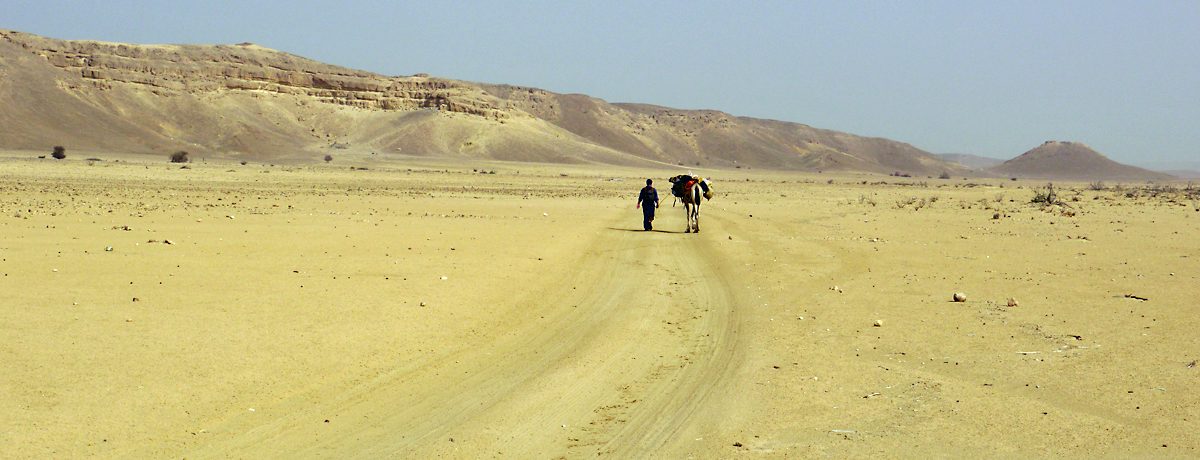
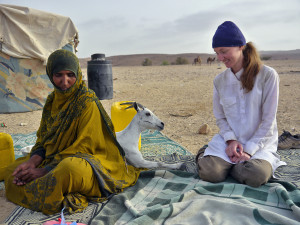
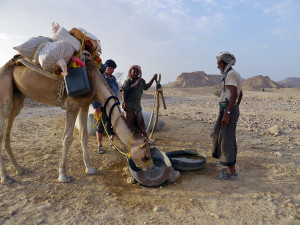
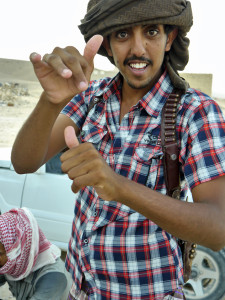
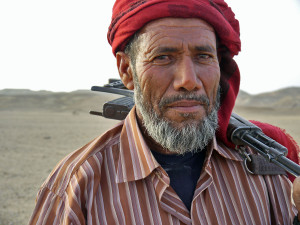
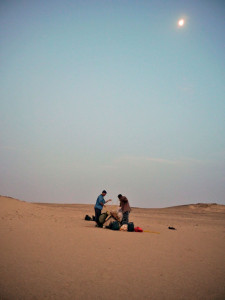
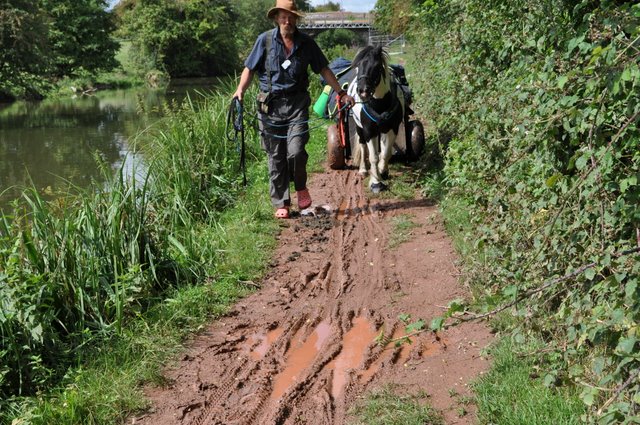
Hej Mikael, tack för att vi, jag, min man och vår vuxne son fick se den här fina filmen från Jemen, det kändes som ett återbesök och vi kände igen oss i framför allt Sanaas gatubilder, hus men även i öknen.
Min man jobbade i Jemen 1980-81, vår son gick i amerikansk skola i Sanaa, jag besökte Jemen 1981 i 3 veckor och vi reste bl.a. per bil på skruttiga vägar genom öknen från Sana till Tais och till Mocha, min man har en hemsida med foton på hemsidan http://hem.passagen.se/wvs/ och han har även bilder i Etnografiska museets bildarkiv: http://collections.smvk.se/carlotta-em/web/object/1520736/REFERENCES/586/, jag har dessutom en del spännande privata familjebilder som min man inte tyckte lämpade sig för publicering, av sonen o hans yemenitiska kompisar, hur vi bodde, av mig i souken osv som jag tycker är mycket roligare och som du kunde få titta på.
Din fina film väckte ungdomsminnen, Tack.
Hej Mikael,
Hur gör jag om jag vill se din resa till Jemen, den finns inte längre på svt play.
Med vänlig hälsning,
Johan
Hej Johan!
Just nu är det inte lätt, men snart hoppas jag ha dem till försäljning. Jag hör av mig då….
It was sheer ‘nostalgia’ going through your blogpost Yemen: The Crossing of Al Mahra. I have been in the region at least nine times from 2009-2013, in my capacity as Vice President & Head of Security ME Region for an O&G (E&P) Operator, owning two blocks in Al Mahra. Had the opportunity of interacting with almost all the tribes in the region (13 in all) and developing some wonderful bonds with a number of Mandoobs, particularly from Siteen tribe.
Second your view about the hospitality of the locals, their strict regional affinity and their unique beduin customs. Have some memorable anecdotes and equally captivating pics. Yeah, one has to be there to understand what it takes to survive in the hottest place on earth.
rgds & Godspeed,
Col Fasih Ahmed,
Retired Indian Army
Great to hear, Fasih! Do write a story about your experiences and I would love to publish it, do write to me on mikael@mikaelstrandberg.com I will tell you format and so…thanks! M
Copy that.